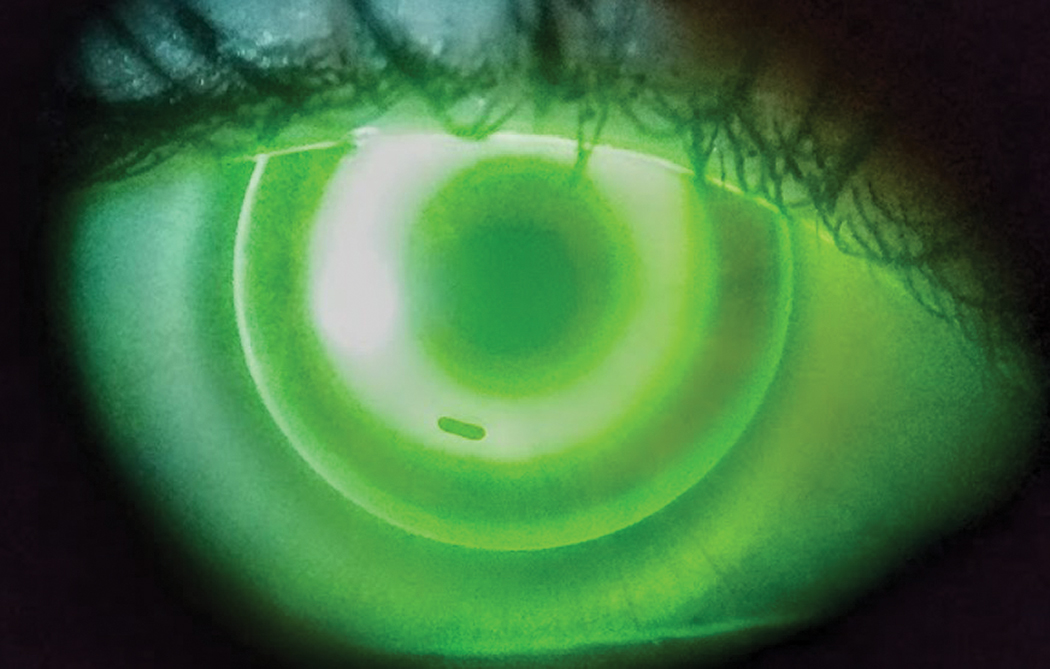 |
Baseline AL and AL length at one year were positively correlated, suggesting longer baseline AL may indicate faster growth; patients with severe myopia should start intervention as soon as possible. Photo: Dan Fuller, OD. Click image to enlarge. |
Current myopia control options are great as the prevalence of the condition continues to increase. Despite treatments proving efficacy, much is still unknown about more nuanced aspects of their implementation. In one new study, study researchers investigated the relationship between amount of corneal refractive change (CRC) after wearing orthokeratology lenses (ortho-K and axial length (AL) growth.
The authors retrospectively included 77 eyes of 77 patients aged eight to 14 and who wore ortho-K lenses for more than 12 months. Patients were divided into two groups: spherical equivalent ≤ -3.0D and spherical equivalent >-3.0D. Results indicated that after one year of ortho-K wear, AL showed a change of 0.2mm±0.1mm. AL elongation at this stage was negatively correlated with the CRC region area and volume. For every 1-mm2 increase in CRC area and every 1-D*mm2 increase in CRC volume, average AL elongation decreased by 0.01mm and 0.002mm, respectively. Patients with spherical equivalent ≤ -3.0D saw AL elongation negatively correlated with CRC region volume, while in patients with spherical equivalent greater than -3.0D, this elongation was negatively correlated with CRC area.
Based on these observations, the authors note that, “for patients with mild to moderate myopia, it is necessary to comprehensively consider the area and volume of the CRC region formed when assessing the expected myopia-control effect.”
Going further into detail, the researchers explain that larger area and volume of CRC region formed after ortho-K wear were indicative of slower AL elongation. The relationship between volume and AL-growth echoes that of a previous study reporting that a curved, pointed pan-like defocus ring was associated with better myopia control than a flat pan-like defocus ring. CRC height and myopia control was found not to have a correlation, but this could be due to follow-up duration of only one year.
Negative correlation was seen with spherical equivalent and height and volume of the defocus ring, but spherical equivalent with CRC area did not display a link. There was negative correlation of CRC region area and AL elongation in the greater than -3.0D group, suggesting severe myopia would present with larger CRC area at baseline. As such, the control effect would be greater. There was correlation of mild myopia and CRC volume and moderate myopia with CRC area, both further suggesting that different parameters should be considered when prescribing ortho-K for those with varying degrees of myopia.
The authors suggest clinically “that according to the myopic defocus theory, an improved design to increase the area and volume of the CRC region after ortho-K lens wear may contribute to a better myopia-control effect.”
Sun L, Song HX, Li ZX, Chen Y, He ZQ. Relationship between myopia control and amount of corneal refractive change after orthokeratology lens treatment. BMC Ophthalmol. October 30, 2023. [Epub ahead of print]. |

